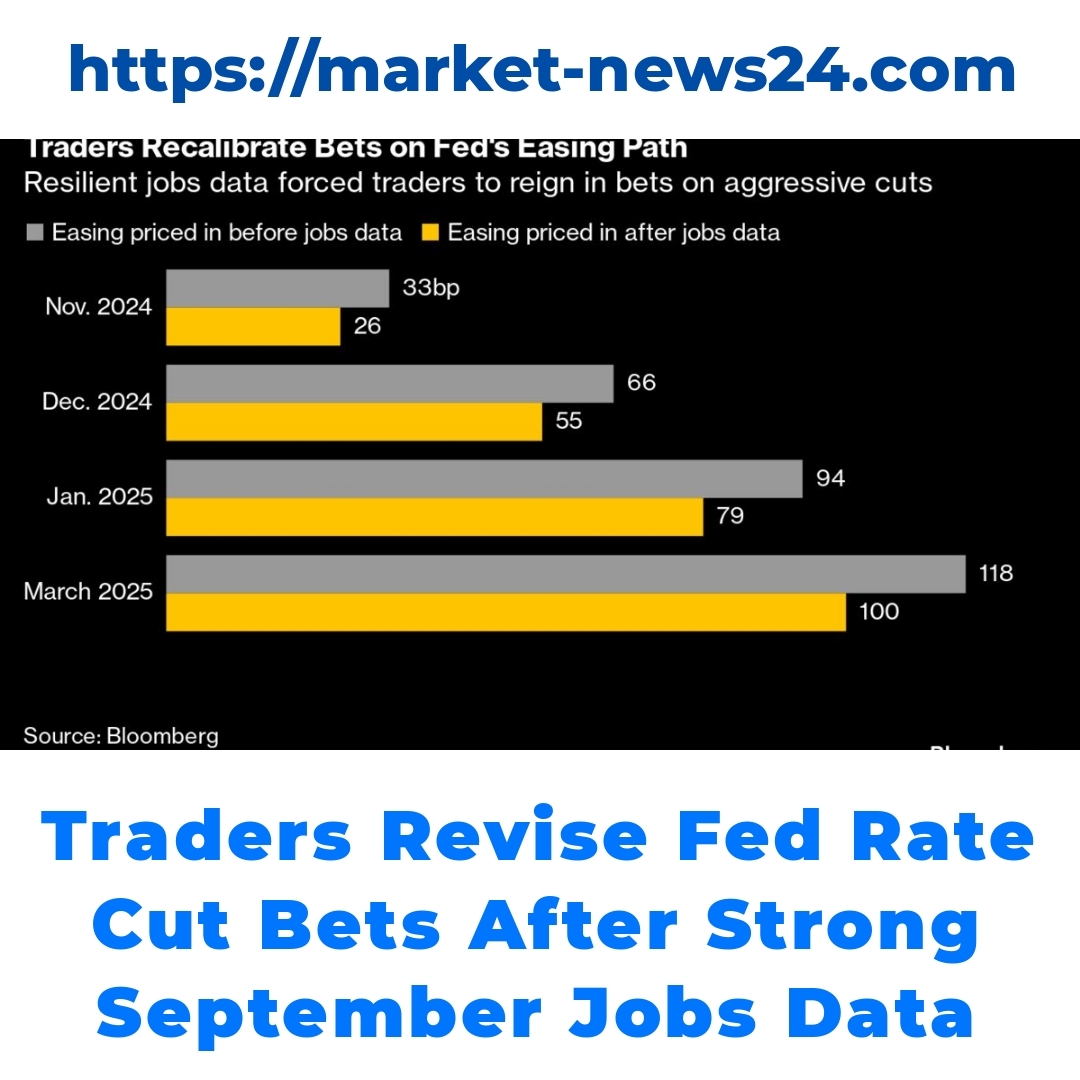The current economic climate is influencing expectations around Federal Reserve interest-rate cuts, particularly in light of recent US employment data. A strong job report for September has altered traders’ perceptions, leading to a significant reduction in their bets on potential interest rate reductions moving forward.


Overview of US Employment Data
The September US employment data showed some pretty impressive numbers. We saw around 336,000 jobs added in the month, which was a lot more than what experts expected. When we look at the unemployment rate, it held steady at about 3.8%. This strong performance in job creation is significant because it indicates that businesses are confident about growth and are willing to hire more workers.
In the past, the hiring trend has fluctuated greatly, but this recent spike is a clear indication that the job market remains robust. With these figures, many analysts are starting to reconsider their predictions about the economy and the Federal Reserve’s next moves regarding interest rates. Strong job creation signals a healthy economy, and it gives the Federal Reserve a reason to potentially rethink any plans they might have had for interest-rate cuts.
Traders’ Bets on Federal Reserve Interest-Rate Cuts
Traders usually base their predictions on a mix of economic indicators, and the employment data is one of the most important pieces of the puzzle. After seeing the vigorous job numbers for September, the sentiment among traders has shifted noticeably. Many are now backing away from earlier bets that suggested the Federal Reserve would cut interest rates in the near future.
Historically, when employment numbers come in strong, traders tend to pull back on their expectations for cuts. There’s a clear pattern: better job figures usually correlate with a less pressing need for the Fed to lower rates. As a result, we’ve seen a significant pullback in trader bets related to interest-rate cuts following this upbeat report.
The Relationship Between Hiring Trends and Federal Reserve Policies
When we talk about hiring trends, they play a crucial role in shaping the Federal Reserve’s monetary policy. If the job market remains strong, it often leads the Fed to adopt a more hawkish stance, meaning they might be less inclined to lower interest rates. The data from September shows that hiring is not just maintaining momentum but is actually gaining speed, which could lead to sustained pressure on the Fed to keep rates steady or even raise them if needed.
The relationship between hiring trends and the Federal Reserve’s decisions is crucial. As hiring remains vigorous, it potentially prompts the Fed to look beyond just inflation and consider overall economic growth. Understanding how hiring trends affect Federal Reserve policies is key for anyone following the market.
Economic Indicators and Their Influence on Interest Rate Forecasts
In addition to employment data, there are several other economic indicators that the Fed watches closely. Inflation rates, consumer spending, and business investment all play pivotal roles in shaping the Federal Reserve’s interest rate decisions. It’s all interconnected: when the job market is strong, there’s usually upward pressure on wages, which could lead to inflation.
This means the Fed has to balance keeping rates low to stimulate the economy with the risk of inflation rising too quickly. If the job market remains strong alongside other economic indicators, it’s likely that traders and analysts alike will adjust their forecasts for interest rates accordingly.
Traders’ Reaction to September US Employment Figures
The immediate reaction of traders to the September employment figures was one of cautious optimism. Markets experienced some volatility as traders adjusted their positions based on the news. Many reacted quickly, selling off positions tied to the expectation of future interest rate cuts.
As the employment data rolled out, you could see shifts in trading strategies. Some traders moved their focus to sectors that typically do well when the economy is strong, while others looked for opportunities in markets less likely to be affected by interest rate changes. Overall, the data prompted a more puzzle-like approach for traders navigating the market landscape.
Conclusion
Looking back at the impact of the US employment data on projections for Federal Reserve interest-rate cuts, it’s clear that this data will hold significant weight in future discussions. As current hiring trends continue to show strength, the market’s consensus could shift towards a more stable interest rate environment.
If the job market remains robust, we’re likely to see forecasts that lean more toward maintaining or even increasing rates, rather than cutting them. It’s important for investors and traders to stay tuned to how these elements unfold, as they can greatly influence financial strategies and market conditions.
Call to Action
As we navigate this ever-evolving economic landscape, staying informed on future Federal Reserve decisions and upcoming employment data releases will be key. Pay attention to how these figures could impact your market strategies and investment decisions. The implications of US employment data on interest rate cuts can resonate far beyond just economic statistics—they can shape the financial future for many.
FAQ
What were the key figures in the September US employment data?
In September, approximately 336,000 jobs were added, and the unemployment rate remained steady at around 3.8%.
What does strong job creation indicate about the economy?
Strong job creation suggests that businesses are confident in growth and are willing to hire more workers, pointing to a robust job market.
How do employment figures influence Federal Reserve interest rate decisions?
When job numbers are strong, the Federal Reserve may adopt a more hawkish stance, making them less likely to cut interest rates as economic growth appears stable.
How did traders react to the September employment figures?
Traders showed cautious optimism, adjusting their positions based on the data. Many sold off positions related to expected interest rate cuts and shifted focus to sectors benefiting from a strong economy.
What other economic indicators affect interest rate forecasts?
Inflation rates, consumer spending, and business investment are other crucial indicators that influence the Federal Reserve’s interest rate decisions.
What should investors keep an eye on following these employment figures?
Investors should monitor future Federal Reserve decisions and upcoming employment data releases to better understand potential market impacts.





